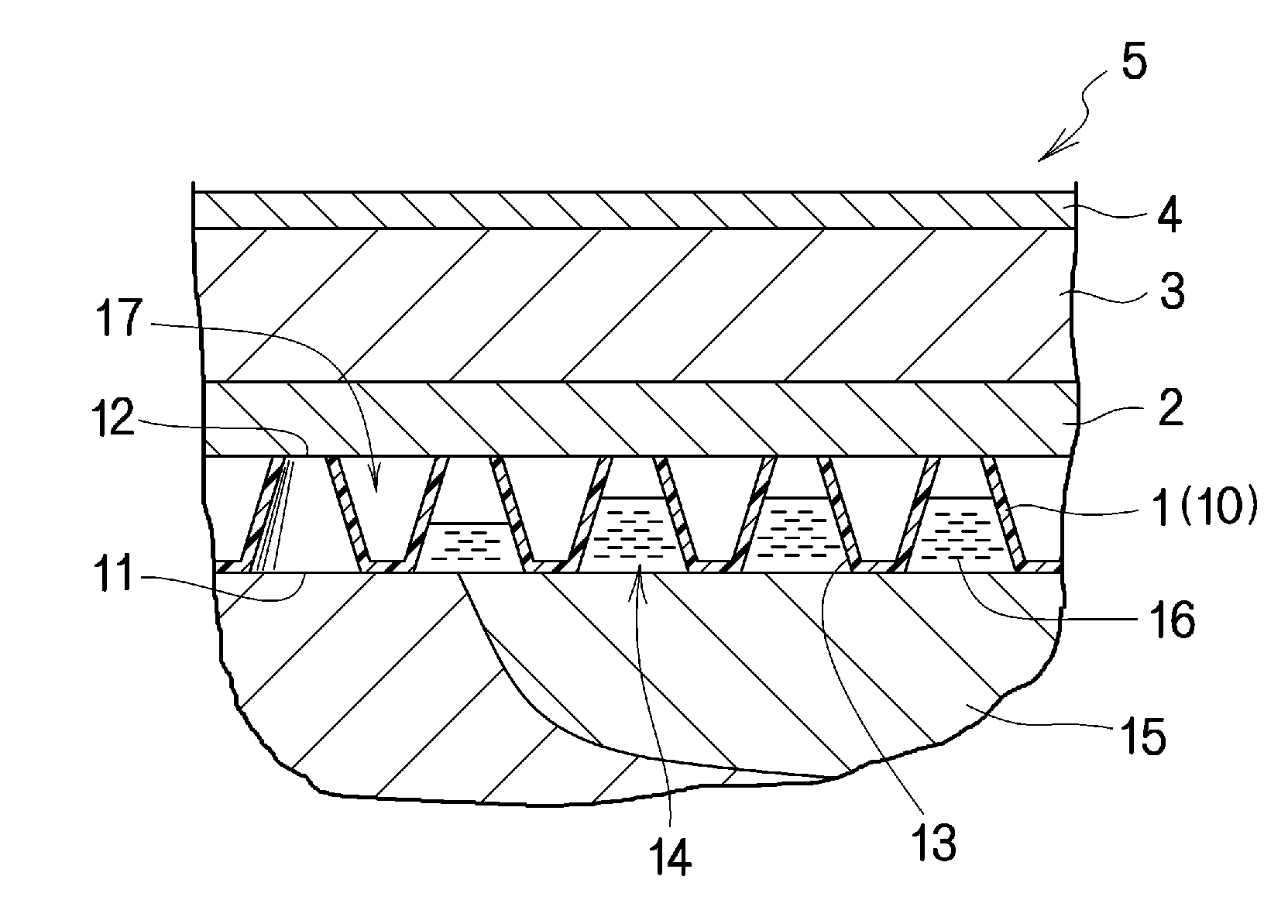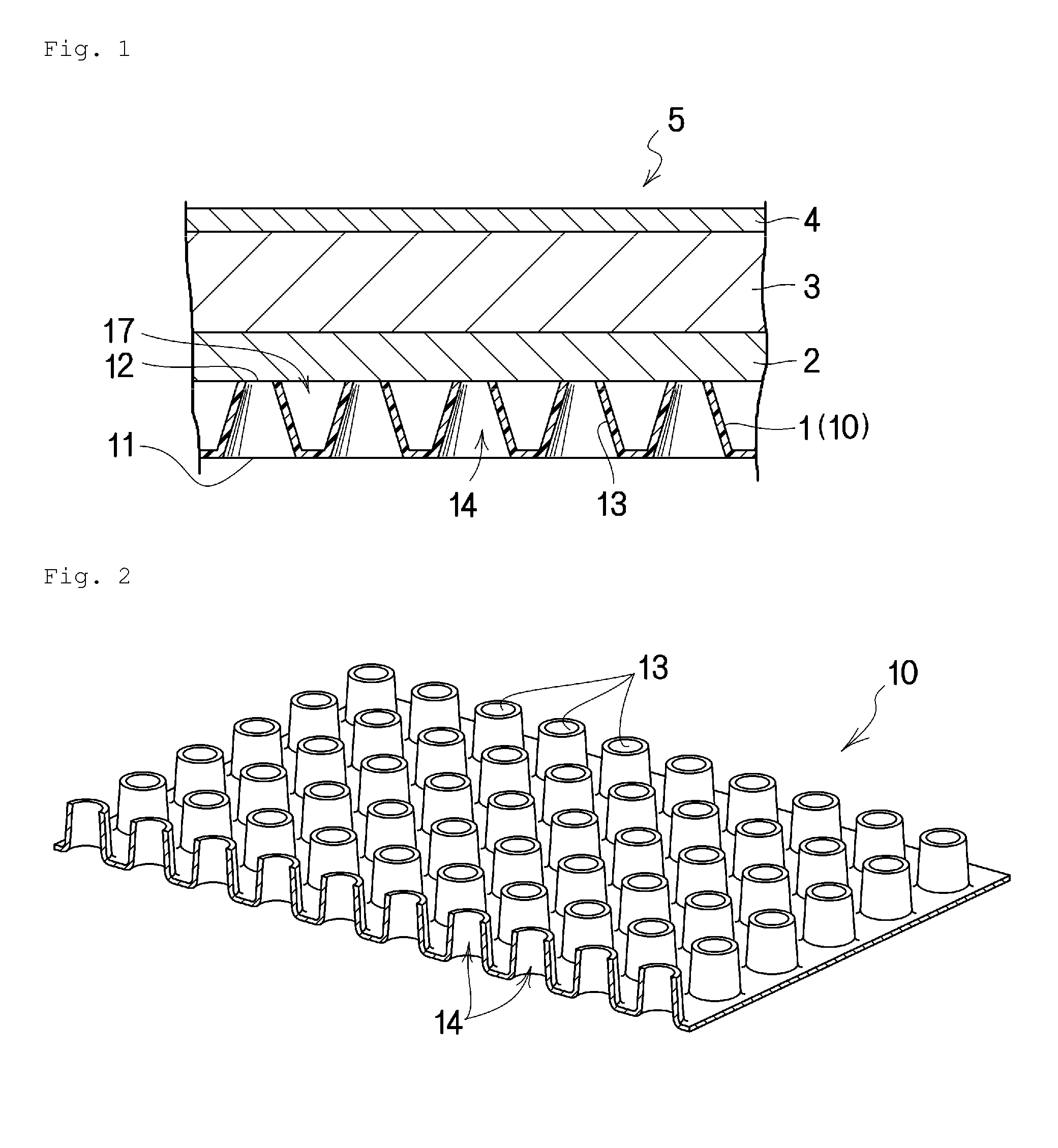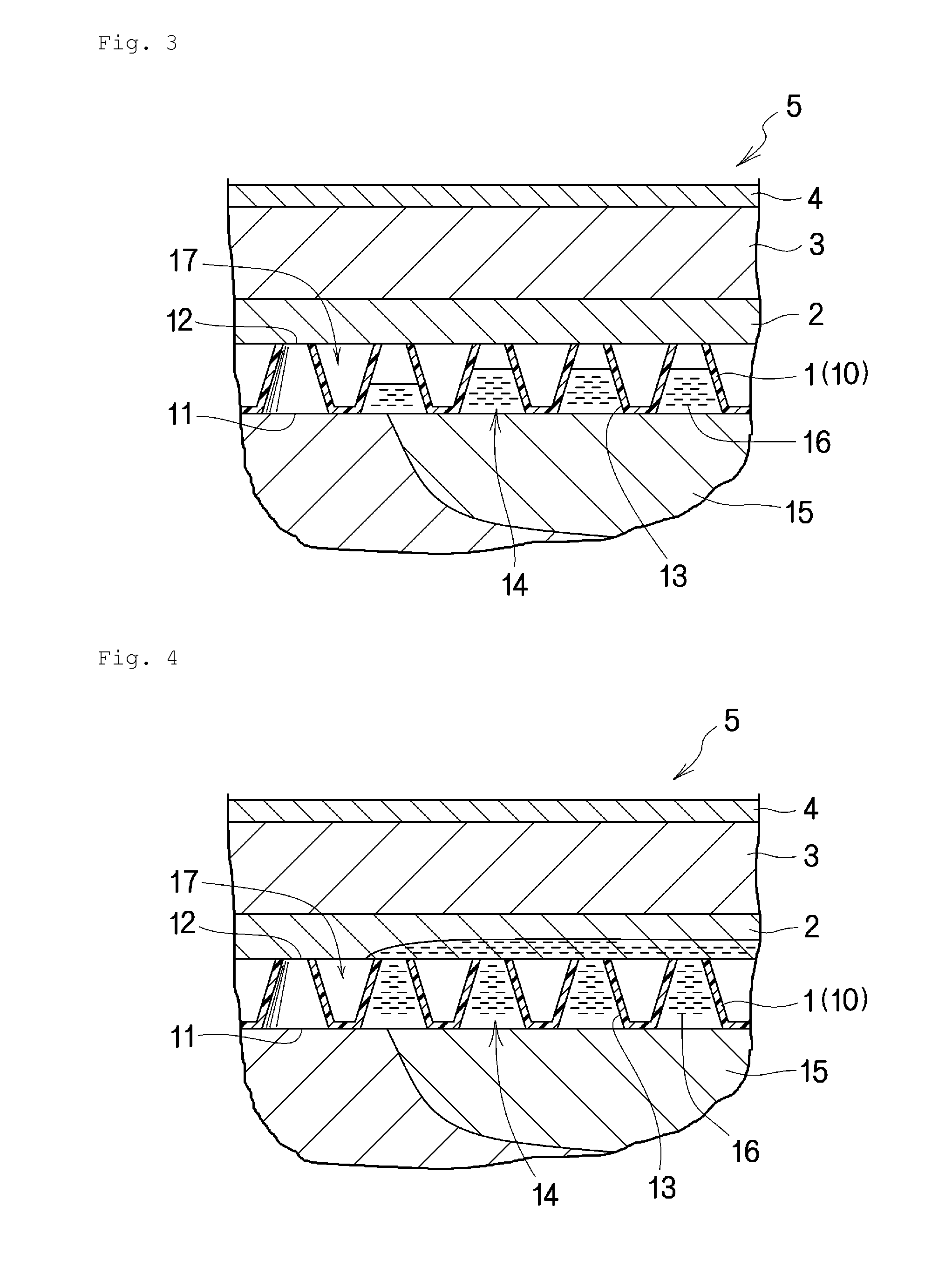Surface sheet for wound dressing and wound dressing
- Summary
- Abstract
- Description
- Claims
- Application Information
AI Technical Summary
Benefits of technology
Problems solved by technology
Method used
Image
Examples
modified example
[0145]In the above first embodiment, the adhesive area (7) is formed on the entire area of the peripheral portion (6). In the present invention, however, the adhesive area (7) may be provided on part of the peripheral portion (6). That is, part of the adhesive area (7) abutting the perimeters of the other layers (1, 2, 3) may be omitted, as shown in, for example, Modified Example 1 in FIG. 7 or Modified Example 2 in FIG. 8.
[0146]That is, in Modified Example 1, a non-adhesive area (8), which is other than the adhesive area (7), extends across the peripheral portion (6) from one edge of the protective layer (4) to the opposite edge of the protective layer (4) passing through the edges of the other layers (1, 2, 3). This Modified Example 1 is preferable in that the non-adhesive area (8), which has no adhesion to the skin, forms an open space which allows air to be supplied to the area around the wound site, thereby preventing the growth of anaerobic bacteria and infections. The protect...
second embodiment
[0159]The above first embodiment has described the case where the liquid-permeation restricting layer (2) is provided between the liquid-permeable layer (1) and the absorbing retaining layer (3). In the present invention, however, the liquid-permeation restricting layer may be omitted as in, for example, a second embodiment shown in FIG. 13.
[0160]That is, unlike the above first embodiment, in the second embodiment, the liquid-permeation restricting layer is omitted and the absorbing retaining layer (3) is directly stacked on the second surface (12) of the liquid-permeable layer (1). This second embodiment is preferable in that the omission of the liquid-permeation restricting layer simplifies the production and reduces the production cost. Although the liquid-permeation restricting layer is omitted in the second embodiment, the similar effect to that of the wound dressing having the liquid-permeation restricting layer can be exerted by utilizing a highly hydrophobic material for the...
third embodiment
[0161]The wound dressing (5) of the present invention as in, for example, a third embodiment shown in FIG. 14 may have the structure in which the following layers are stacked and integrated together in the following order from the side to face a wound site: the liquid-permeable layer (1), the absorbing retaining layer (3), and a second liquid-permeable layer (1a). In this case, the material of the second liquid-permeable layer (1a) can be selected from the above-described materials used for the above liquid-permeable layer. Each of the liquid-permeable layers (1, 1a) may be made of an identical material or different materials.
[0162]The wound dressing (5) of the third embodiment is provided with the second liquid-permeable layer (1a) on the opposite surface of the absorbing retaining layer (3) to the surface which is closer to a wound site. Hence, the wound dressing (5) has a better breathability, which is advantageous for preventing sweating and damping of the skin other than the wo...
PUM
| Property | Measurement | Unit |
|---|---|---|
| Diameter | aaaaa | aaaaa |
| Diameter | aaaaa | aaaaa |
| Surface tension | aaaaa | aaaaa |
Abstract
Description
Claims
Application Information
 Login to View More
Login to View More - Generate Ideas
- Intellectual Property
- Life Sciences
- Materials
- Tech Scout
- Unparalleled Data Quality
- Higher Quality Content
- 60% Fewer Hallucinations
Browse by: Latest US Patents, China's latest patents, Technical Efficacy Thesaurus, Application Domain, Technology Topic, Popular Technical Reports.
© 2025 PatSnap. All rights reserved.Legal|Privacy policy|Modern Slavery Act Transparency Statement|Sitemap|About US| Contact US: help@patsnap.com



